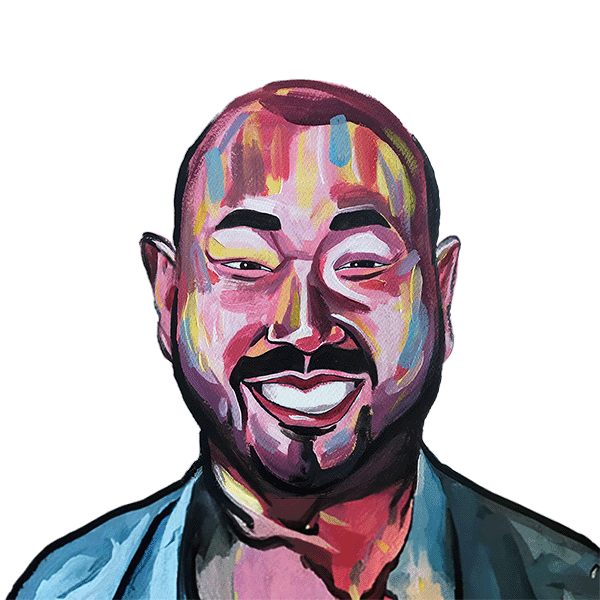HRBP 2.0: Connecting Humanity With Business

HR teams across the world and industries have taken center stage during the most recent paradigm shift. However, the role of HR has been developing just as rapidly even prior to the pandemic. The 4th industrial revolution is upon us – the global business landscape has changed drastically, as has the generational workforce. As baby boomers start retiring, millennials now make up the vast majority of the workforce. And when it seems like companies are just starting to figure out how to motivate, engage and retain their millennial workforce, in comes the Gen Z crowd, with a whole new set of values and behaviors that means companies need to adapt and adjust again to stay relevant.
Just as companies and managers need to adjust, so does the mentality of an HR team. We must keep up to speed with the changing landscape of the business, the field of HR, and also across human society. For HR Business Partners (HRBP’s) in particular, we’re at an exciting crossroads where the old traditional ways of operating are becoming less relevant, and more of us are carving our own paths through uncharted territory, as we strive to adapt to the fast-changing landscape of our business and talent. Perhaps for the first time since the introduction of the HRBP role in the early 90’s, it’s become glaringly, unavoidably, obvious that throwing cash and stock at employees just won’t cut it anymore when it comes to engagement, motivation, and retention.
The new generation wants and expects so much more from their employers now, and a good HRBP is the powerful connective tissue between the voice of the people and company leadership. People want flexibility, better work-life balance, and most importantly, to be working for a company that has an inclusive and belonging culture and strong values that resonate with them. This is why HRBP’s have such a critical role for any business – they are not only some of the strongest culture carriers for a company, but also the shepherds to ensure that company culture is evolving in the right, positive direction.
What has always been a unique and demanding position, is now a multitude of times more complex. But what does being an HRBP really mean and why do these changes mean extra complexity? Let’s break it down, by looking at the acronym of an HRBP into two parts.
The Human in HRBP
The first part of the acronym stands for Human Resources and the strongest emphasis needs to be on HUMAN.
If we look back over the past 3 years, it hasn’t been an easy ride. Unprecedented events such as COVID-19, BLM, the Ukraine/Russia war, political unrest, natural disasters, and so many other global incidents have created stress and anxiety for so many people. And whilst these events are happening outside the workplace, the stress and anxiety of your people will naturally follow them into their day-to-day work life. There’s never been more importance for an HRBP to be more human than in today’s world. That’s why having an unbiased level of empathy, compassion, and vulnerability are essentials of an HRBP’s toolkit.
This will be especially obvious to the organizations that have already grasped the relevance and requisite to create a culture of inclusion, belonging, and well-being. Those organizations have acknowledged that everybody is different, people come from different backgrounds, are in different stages of their lives, and that we all have good days and bad days. Any HRBP worth their salt has recognized that they need to adapt to these factors when making decisions or providing advice and counsel on how to manage their People Strategy.
As a breed of strategic HR professionals, we need to be more empathetic and focus on developing our people. We need to dig deeper to understand what variables are happening in a person’s life that may be leading to behavioral issues. We need to focus more on support, rather than finding the quickest solution to exit them. And in situations where HRBP’s do exit employees, we need to acknowledge that an employee’s offboarding experience is just as important as their onboarding experience. So approaching sensitive terminations in a humane, empathetic, and gracious way will go a long way for both the company and the employee.
We need to listen more than ever to the voice of our people and take the time to get into the weeds and not just focus on senior leadership. We need to be pushing for diverse hiring of talent more than ever. This is the time to really lean in because if we lean out, we lose the connection with our people. We also need to start being more fearless about the decisions we make, forging our own paths and taking situations case-by-case (every human is different, and therefore every HR case is different), and not try to always fit a round peg through a square hole just because a “rulebook” has said to.
The Business End
The second part of the acronym, the BP part stands for Business Partner. Here, the strongest emphasis must be on BUSINESS.
Being an HRBP means being deeply connected to the business. Not only to the business leaders each HRBP supports, but the wider company business goals and strategy. This way, HRBPs can have a proactive view of the pitch, and see what future organizational changes may need to be made to best position the business for efficiency and success. And this is where the partnership comes in; the relationship between HRBPs and business leaders must be solid. There must be a high level of trust between the two to be able to improve culture, staff engagement, retainment, and business results. HRBPs should be expected to challenge the leaders and provide them with an unbiased perspective on their teams and business, so they can make the best decisions possible. And of course, the bread and butter of an HRBP partnering with the business across people related topics will always exist. Such examples being:
- Organizational Design
- Succession Planning
- Performance Development
- Leadership Development
- Workforce Planning
- Employee Relations
- Compensation & Benefits Strategy
But the bread and butter alone is not enough. The days of ticking off an HR checklist are long gone. HRBPs should be strategic advisors rather than tactical instruments in the HR space.
The Skill Set of an HRBP
As a people-first company that’s also accustomed to working in an environment where change is our only constant, the skills we look for in an HRBP at Spotify may differ from other companies.
One skill that’s absolutely essential for our HRBPs is the ability to adapt to change and to be a champion of change management for the businesses we support. This is simply a non-negotiable requirement when working in a high-growth business. Being skilled in managing company reorganizations is one thing that’s quite commonly asked of HRBPs. However, at Spotify, we go a step further as we expect HRBPs to have the skills required for shepherding an organization through the change management process in a way that’s transparent, empathetic, and constructive so that we minimize the stress and anxiety for our people. Taking the time to listen to your people and ask for feedback after a major change management moment is a powerful strategy that seems to be overlooked in this process by so many companies. Being skilled in this is much rarer, and is not in your typical HR playbook. Instead, these kinds of skills are best learned when working in a people-first environment.
Given all of these components, the top skill for an HRBP is the balancing act. In today’s world, a good HRBP is someone who can connect the human side of their job and align it with the business priorities. This is the golden ticket to driving positive change across your organization.
At Spotify, we believe the HRBP role is fundamentally influential to ensuring the success of our people and of our business. We take the lead in reimagining the future of work for our people in an asynchronous flexible work environment, we develop talent strategies that resonate with our culture and values, and we address wellbeing and work-life balance in a way that truly supports our people.
We’re living in a new world, where the new generational workforce thinks very differently when it comes to engagement and happiness at work. If you want to stay ahead and win the war for talent, then you must throw out the old HR playbook and instead, reimage and rethink how you can foster and retain talent. The new playbook is a complex one, where HRBPs need to start rewriting as they learn and adapt to all the changes happening around them. This is where HRBPs will lead the way in the future.



